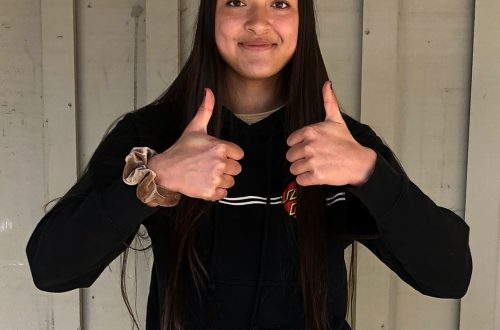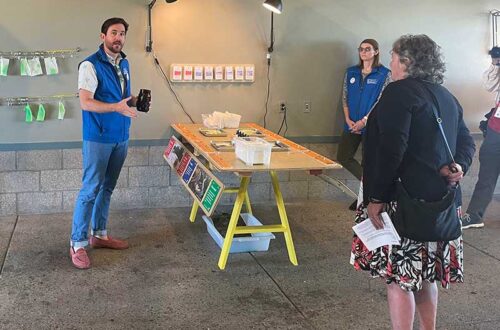Schools Look at New Forms of Discipline
By Suki Wessling

Once they looked through the lens of equity, they realized that school discipline had to be reformed—now.
When you say “discipline,” most people imagine punishment. When you say “suspension,” people imagine kids being sent home. When you say “behavior,” people imagine bad behavior rather than behavioral health.
Santa Cruz’s County Office of Education is trying to turn all these suppositions on their heads, and it all started with the numbers.
“We started asking the question, are we treating students differently based on their ethnicity?” said County Superintendent of Schools Faris Sabbah. “We have been gathering data from a variety of places and looking at it through an equity lens.”
Sabbah and the others quoted in this article presented the COE’s new approach to discipline to community members at an Inside Education meeting last fall. Once they looked through the lens of equity, they realized that school discipline had to be reformed—now.
The statistics for Aptos High offered astounding clarity. Sabbah says that even though 40 percent of the students on campus were Latinx, 100 percent of students in detention were Latinx. “We started looking at the data and we found that every student there had received the consequences for something serious, but we found another group of students who had participated in the same behavior and were given community service. It was so tied to ethnicity—it was such an obvious example of inequity—we were able to dismantle it right away.”
The worst systems of the past have been dismantled in California. Corporal punishment is illegal. Staff receive anti-bias training and are more diverse than in the past.
But persistent attitudes about the purpose of discipline and how to enforce it reinforce the inequity that we see in our schools. Local educators are taking a hard look at ‘the infamous K’—ed code 4900K, which allows students to be suspended as punishment for any distraction or willful defiance. “We want our school to be just, not manifestations of inequity that exists in society at large,” Sabbah explains.
A lot of student discipline is in response to substance abuse. Brenda Armstrong, Prevention Program Manager for the County, gives an example of how meting out punishment in response to substance abuse has the opposite of the intended consequence. One student she worked with had been bound for college until his suspension.
“After he got suspended, the schools offering scholarships backed out. I was so disillusioned that this was the process we were using. Why did we react with punishment rather than addressing the root cause?”
COE is responding by changing their suspension model. In the past, students were disciplined by sending them home. This could have a variety of unintended consequences, such as the fight that sent Sarah Emmert’s son home from middle school.
“The students got suspended. The other student was our neighbor, so the boys just played together the whole day they were out of school!”
Emmert is Director of Community Impact at United Way, which is deeply involved in helping COE refocus student discipline on “restorative practice” which is “trauma-informed.” As much as these terms might sound like liberal buzzwords, they’re actually quite practical. A new focus on “in-school suspension,” where a student doesn’t “get away with” misbehavior but does get the guidance of caring adults and reintegration into their school environment when possible, works much better than the old model. Rather than staying home and playing video games, students stay in school and work with staff to get to the root of their problems at school and return to classes.
That’s where trauma comes in. As child behavior expert Dr. Ross Greene says, “kids do well if they can.” Adults often look past the trauma that underlies misbehavior, treating the behavior rather than the root cause. COE is working to change that.
In some cases, in-school suspension is not appropriate, and students can’t be reintegrated back into their mainstream school. That’s where the system of small, alternative schools comes into play. These schools are small by design so that staff can get to know each and every student. Students who feel lost, bullied, or threatened in large schools find that the staff at these schools are dedicated to helping them integrate into a community.
“Being trauma-informed starts with relationships, having that routine and predictability that provides a sense of safety,” explains Cristal Renteria, site administrator at Sequoia Schools. “We have no idea what students are carrying with them.”
Dollar for dollar, this new approach to helping students who act out at school is more effective. But more importantly, it’s a more equitable system that focuses on helping students become functional adults, rather than funneling them into the “school-to-prison pipeline.”
Denise Sony Sanson, Executive Director of Career Advancement Charter, a small school for students in their late teens who need direct intervention, remembers one new student in particular.
“I asked her, ‘what do you like about this school?’ [I was] trying to have open-ended questions, engage in dialogue,” Sanson remembers. “She shared with me, ‘I feel safe here’.”
Students who feel safe, who feel noticed and appreciated—that’s what educators hope will come out the other end of this new, supportive pipeline they are building for our at-risk youth.
Suki Wessling is a local writer and educator. Read more at BABBLERY.COM.







